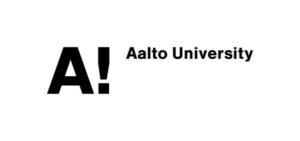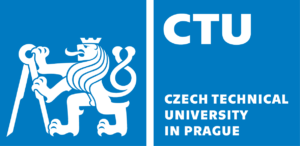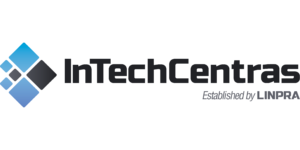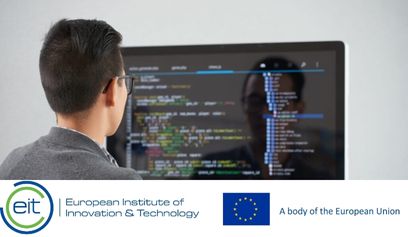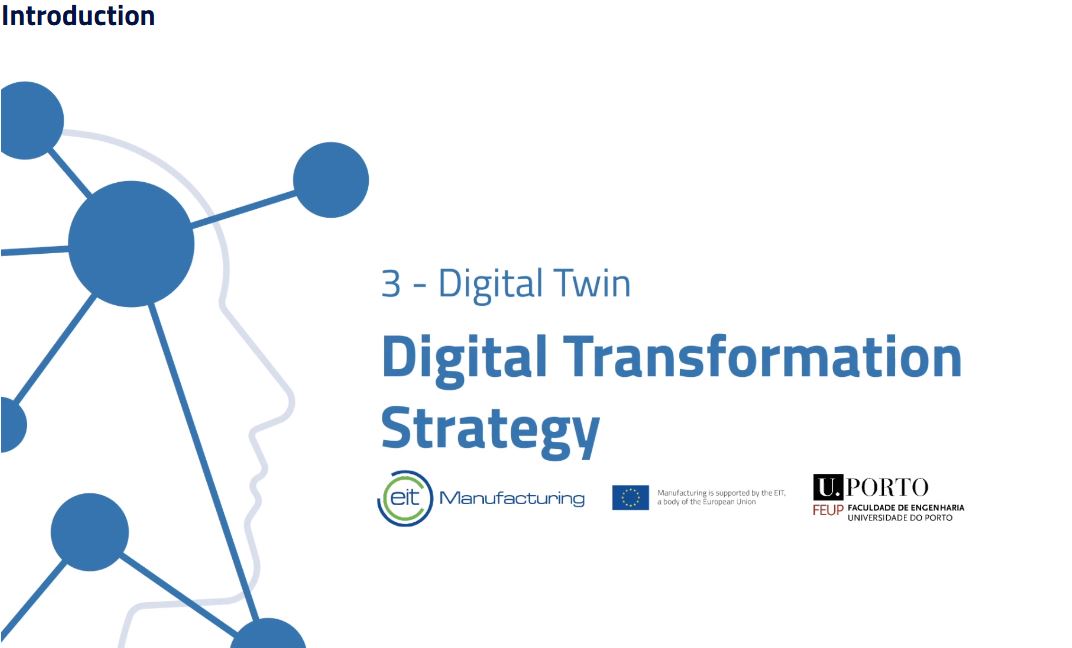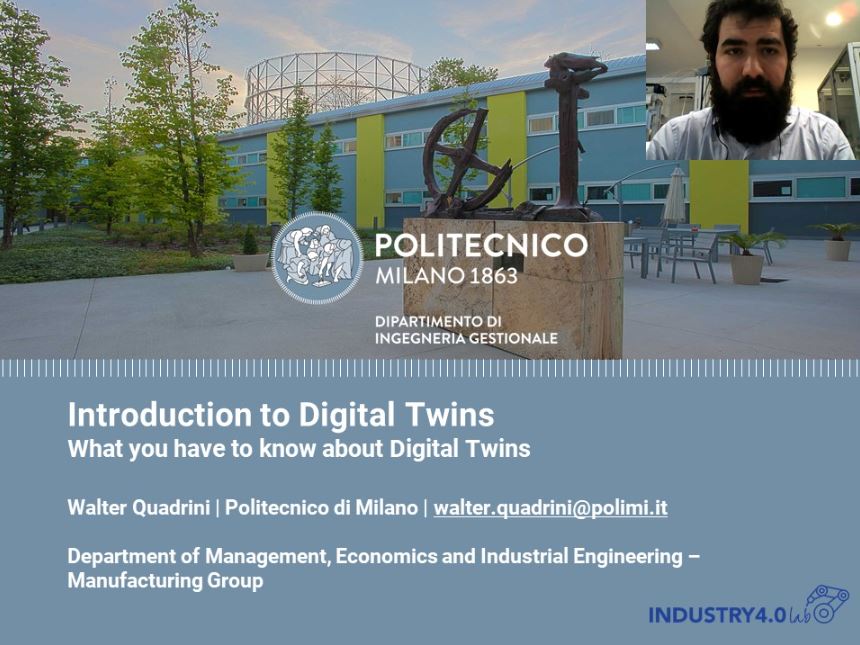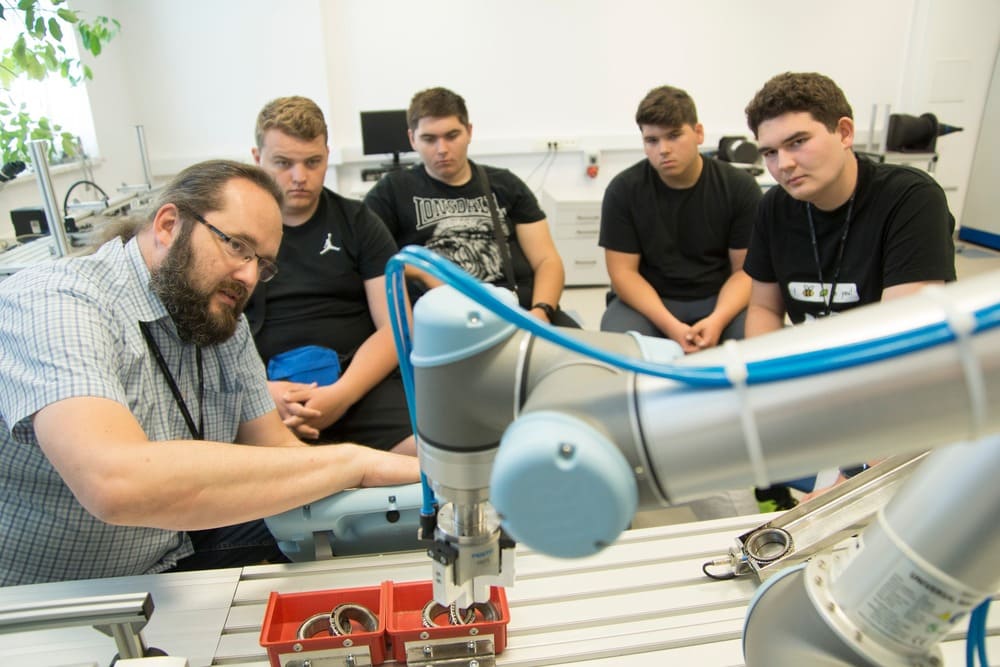Type of course:
Digital learning, Path
Language:
EN
Duration:
3 hours
Workload:
8 hours
Proficiency:
Intermediate
Target:
Professionals
This course is officially recognised and labelled by the European Institute of Innovation and Technology (EIT). EIT Label is a quality mark awarded to programmes demonstrating outstanding innovation, educational excellence and societal impact.
Within the Industry 4.0 paradigm, where IoT and CPS technologies are perhaps the main innovations for digital business and the economic growth of the industrial fabric, this Learning Path encourages the creation of unique pedagogical conditions, which integrate several scientific areas that are now highly desirable in the profiles of professionals in the industry.
At the end of the Learning Path, the trainee will be familiar with the new technologies that transform the future of the intelligent production, as it involves areas of knowledge transversal to computer engineering, namely the digital transformation of modern industrial production systems, where the intersection of information and communication technologies (ICT) with operational technologies (OT) predominates. The trainee should be able to apply these technologies to several problems currently
existing in the industry.
The main topics to be addressed are Digital Twin; Edge Computing, Sensorization; Control, and IEC 61499; Model-Based Engineering.
The Learning Path starts with an introduction to Digitalization and key enabler technologies, such as Digital Twin, CPS and IoT. Then, the focus shifts to Python programming, as a coding language to be used in the Edge layer. The trainee will also be exposed to the automation pyramid and standards to design, implement and control industrial systems, such as the recent IEC 61499. With this background, the trainee will know the benefits of Model-Based Engineering, will be able to use these concepts in the DINASORE framework and Schneider Electric Automation Expert, and deploy in an industrial controller.
DINASORE enables the design and implementation of a CPS using a Model-Based Engineering, based on IEC 61499 compliant Function Blocks. The best part is that these Function Blocks are implemented using Python, and DINASORE enables by default data communication using OPC UA. This means that DINASORE can be used to create digital models of a factory shop floor, enabling data collection, sensor integration, standardized connectivity and all the features that Python makes available, such as data science modules.At the end of the Learning Path, the users can:
– Apply IEC 61499 for the design and development of Cyber-Physical Systems.
– Create Function Blocks using the DINASORE framework and Schneider Electric Automation Expert.
– Demonstrate how to develop and operate a Digital Twin in a Edge device.
Learning outcomes
- After completing the learning path, the user can apply IEC 61499 for the design and development of Cyber-Physical Systems.
- After completing the learning path, the user can create Function Blocks using the DINASORE framework or the Schneider Electric Automation Expert.
- After completing the learning path, the user can demonstrate how to develop and operate a Digital Twin in an Edge device.
LessonCPPS Applicability in Industrial Context
Course Content
LessonDigital Twin - Key Technologies and Main Challenges CPPS
Course Content
LessonDigital Twins - Introduction to Digital Twins (EN)
Course Content
LessonWhat are Cyber-Physical Production Systems?
Course Content
LessonDigital Twin Quiz
Course Content
LessonIntroduction to Python Programming
Course Content
LessonQuiz on Python Programming
Course Content
LessonTask on Python Programming
Course Content
LessonFundamentals of IEC 61499(EN)
Course Content
LessonQuiz on the industrial standard IEC 61499
Course Content
LessonQuiz on Cyber-Physical Production Systems
Course Content
Topics
Digital Transformation, Internet of Things (IoT), Digital Twin


